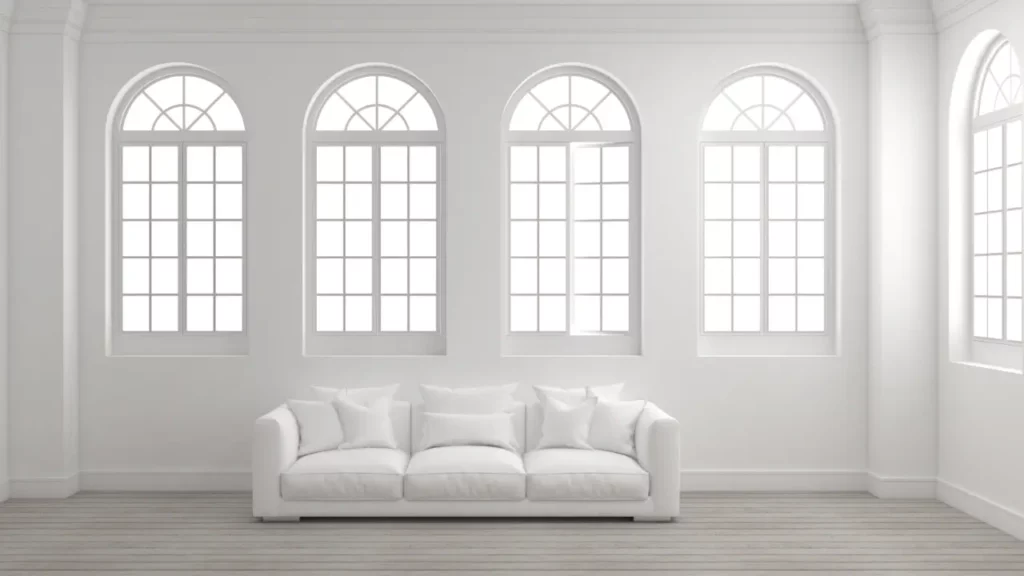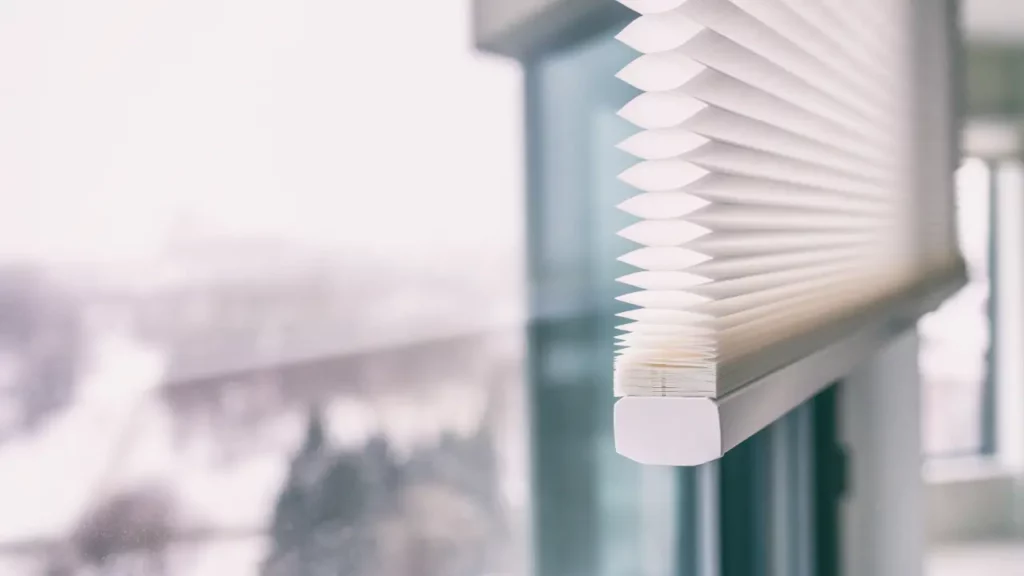Stained Vs. Painted Shutters: Which Are Right for Your Home?

Decisions, decisions.
You have 50 choices of cereal at the grocery store and 30 choices of salad dressing. Now, you have to pick a finish for your new indoor shutters. It’s enough to make your head explode.
Fortunately, it boils down to a simple commitment: stained or painted shutters. There are no other finishes for wood shutters, although dozens of colors and shades exist. Let’s explore the pros and cons of each so you can make the best decision for your home.
Stained Window Shutters
Pros
- Natural Aesthetic: Stained shutters maintain the natural wood grain, providing an organic, warm look that adds character to your home.
- Durability: Staining protects the wood from moisture and UV rays, extending the lifespan of the shutters.
- Easy Maintenance: Stained shutters are low maintenance; a simple reapplication of stain every few years keeps them looking great.
- Color Variety: Stains come in various colors, allowing you to choose the tone that best matches your interior or exterior décor.
Cons
- Limited Color Choices: Stains offer a limited color palette compared to paint, which might not suit every taste.
- Initial Cost: High-quality stained wood shutters can be more expensive upfront.
- Regular Maintenance: While low maintenance overall, shutters exposed to harsh sun require occasional reapplication of stain.
Painted Window Shutters
Pros
- Endless Color Options: Paint offers unlimited color choices for a customized look that can match any decor.
- Coverage: Paint can hide imperfections in the wood, providing a smooth and consistent finish.
- Protection: Paint acts as a barrier, shielding the wood from moisture and UV rays. And it’s easy to touch up.
- Lower Initial Cost: Painted shutters are usually cheaper than stained ones.
- Easy to Clean: You can clean painted shutters with a damp cloth, making them ideal for high-traffic areas.
Cons
- Less Natural Look: Paint covers the natural wood grain, giving a less organic look than stains.
- Higher Maintenance: If painted shutters chip or peel, they require immediate touch-ups to maintain their appearance.
- Frequent Repainting: Depending on sun exposure, painted shutters may need repainting every so often.
- Harder to Change Colors: Changing the color of your painted shutters can be labor-intensive.
Best Houses for Stained Shutters
- Rustic and Traditional Homes: Stained shutters have a warm and earthy tone.
- Craftsman Homes: Stained shutters’ natural and handcrafted appearance harmonizes with the fine details of Craftsman-style homes.
- Cottage and Cabin Retreats: Stained shutters enhance the cozy and inviting atmosphere of these dwellings.
- Eco-Friendly Homes: Stained shutters use fewer chemicals than painted shutters.
Recommended Decor
- Wooden furniture
- Earthy tones like warm browns, greens, and beige
- Natural textures like stone, jute, and rustic fabrics
- Vintage accents
- Plants and botanicals
Best Houses for Painted Shutters
- Colonial Homes: Painted shutters can provide a pop of color and contrast to a Colonial-style home’s symmetrical and formal appearance.
- Beach Houses: Vibrant painted shutters can add a playful and beachy vibe to coastal homes.
- Contemporary and Modern Homes: Painted shutters can introduce bold or contrasting colors to the minimalist design.
- Brightly Colored Homes: Vibrantly painted shutters add visual interest to homes with bright interiors.
Recommended Decor
- Minimalist furniture
- Bold and contrasting colors
- Abstract art
- Sleek finishes and materials
- Tropical or nautical-inspired accents
FAQs: More about Window Shutters
Q: Can I install stained indoor shutters in my bathroom or kitchen?
You can install stained shutters in any room, including high-humidity areas like bathrooms and kitchens. However, sealing and maintaining the shutters is essential to prevent moisture damage.
Q: Can I paint over stained shutters?
You can paint over stained shutters if you change their color. Always sand and prime the shutters first for the new paint to adhere.
Q: Can I repaint my painted shutters to change the color?
Yes. However, it can be labor-intensive and require proper preparation and priming for the new paint to adhere.
Q: What is the most popular wood type for stained indoor shutters?
Basswood is the most popular wood choice for stained shutters due to its straight grain and uniform texture, making it perfect for showcasing natural stains.
Q: Do indoor shutters require special maintenance if I have pets?
Both stained and painted shutters can handle pets, but regular cleaning may be necessary to remove pet hair or paw prints.
Q: How do I clean stained indoor shutters to maintain their natural beauty?
Use a damp cloth to wipe down dust or dirt. Avoid harsh chemicals, which can strip the stain and damage the wood.
Q: Is installing shutters inside or outside the window frame better?
It ultimately comes down to personal preference. Installing shutters inside the frame provides a clean and seamless look, while outside installation offers more privacy and light control.
Q: Are there any eco-friendly or sustainable options for stained indoor shutters?
Some manufacturers offer shutters made from sustainable or reclaimed wood. Additionally, using low-VOC stains and sealants can reduce the environmental impact. Staining shutters is more eco-friendly than painting because it requires fewer chemicals.
Q: Can I mix and match stained and painted shutters in my home?
Mixing and matching can create a unique and personalized look. For example, you might have stained shutters in your bedroom for a cozy and natural vibe while using brightly painted shutters in your living room for a pop of color.
Q: What’s the average lifespan of stained indoor shutters with proper care?
Quality shutters can last for decades with proper care and maintenance. However, it ultimately depends on the wood type and the level of exposure to sunlight and moisture.
Q: Can I install painted indoor shutters on unusually shaped or arched windows?
Customized shutters can fit almost any window shape or size. Please consult Aero Shade for your windows’ best options and designs.
Q: Do indoor shutters provide insulation benefits in terms of energy efficiency?
Shutters can provide extra insulation, reducing heat loss or gain through your windows. However, the energy efficiency level depends on the material type and how well the shutters are sealed.
Q: Can I install indoor shutters myself, or should I hire a professional?
Installing shutters can be a DIY project, but we recommend professional installation to prevent damage to your windows.
Q: Do painted indoor shutters fade over time, and how can I prevent it?
Like any painted surface, shutters can fade over time due to sun exposure. Choosing high-quality paint, regularly cleaning and maintaining your shutters, and installing UV-blocking films on your windows can help.
Q: Can shutters affect the resale value of my home?
Choosing high-quality and timeless shutters can boost curb appeal and positively impact the resale value of your home.
Q: What’s the difference between wood composite and natural wood shutters?
Wood composite shutters are made from engineered wood materials, combining wood fibers with resins or polymers. Real wood shutters are crafted from natural hardwood.
Related Links
Related Posts


